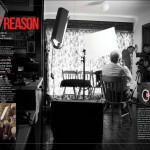By Matjaz Kranjec
Grief
Grief is a word which we cannot avoid during our life, doesn’t matter if we want to reject it or we are totally acceptable to it. Grief was a companion to humans from the very beginning of history. Different cultures and ethnical groups have a different relationship to it and we could say that our understanding of grief also differences thru our aging.
This short essay is bringing out some understanding to this word thru different cultural point of views from history to nowadays.
Grief as a metaphor in Revers Speech is important, usually is very personal same as our approach to life and death and could reveal depths of our psyche and our attitude to life and all there is in general.
Word origin and history
The historical word comes from early 13c. as »hardship, suffering, pain, body affliction. Mean is mental pain and sorrow. It is an Anglo-French origin.
From old French “grief” – wrong, grievance, injustice, misfortune, calamity; from greater – afflict, burden, oppress
From Latin “gravare” – to cause grief, make heavy
From “gravis” –weighty
From medicine- deep mental anguish arising from bereavement.
In general means, deep or intense sorrow or distress at the death of someone, or something that causes keen distress of suffering.
Informal could be trouble or annoyance (people were giving me grief for leaving ten minutes early) or to end unsuccessfully or in disaster.
Grief is a multifaceted response to loss, particular to the loss of someone or something that has died, to which a bond or affection was formed. Although conventionally focused on the emotional response to loss, it also has physical, cognitive, behavioral, social, and philosophical dimensions. While the terms are often used interchangeably, bereavement refers to the state of loss and grief is the reaction to loss.
Grief is a natural response to loss. It is emotional suffering one feels when something or someone loves is taken away. Most common understanding is a connection between death and grief, but people grieve in connection with more things or varieties of losses. Loss can be described either as physical or abstract.
There is an emotional path from distress to recovery and grief is a complex process of accepting a loss and cannot be easily described with some model or phases.
They are some reactions closely connected with the grief.
Crying is normally recognized as natural path of grieving. But also crying must be not forced as so-called »healthy stage« of grieving become harmful one. On other hand lack of crying can be also a natural reaction and potentially protective but can be also seen as an act of resilience. Scientifically was found out that persons who are grieving do not spontaneously talk about the loss. Any forced act or emotions can be harmful.
According Susan Berger’s book “The five ways we grieve” grieving is represented by five groups;
-Nomads they do not understand the loss, which affect them traditionally, so they do not react traditionally
-Memorialists are committed to preserving the memory of the loved ones.
-Normalizers place primary emphasis on their family, friends, and community.
-Activists are helping others who are dealing with the same issues or diseases
-Seekers they adopt religious, philosophical or spiritual beliefs to create their life meaningful.
Greek Mythology
Penthos was the spirit of grief, mourning and lamentation. He may have been numbered amongst the Algae(Sorrows).
Penthos tended to victimize the same people. He favorites people who cried for their deceased loved ones.
Grief described in the literature and poetry:
The eye, like a shattered mirror, multiplies the images of sorrow —Edgar Allen Poe
Grief holds him like a corset —Anon
Grief is to man as certain as the grave —George Crabbe
Griefs … pain me like a lingering disease —John Milton
Grief sat on his chest like a dragon —Norman Garbo
Grief had flown away like a sparrow —Jean Stafford
Grief deep as life or thought —Alfred, Lord Tennyson
Grief as is interpreted in different religions
Biblical interpretation
Grief is an emotion common to the human experience. The process of grief is present throughout biblical messages. Many biblical characters experienced deep loss and sadness. For example; Job, Hannah, David, Naomi etc. Even Jesus mourned (John 11:35, Matthew 23:37).
He was touched by Lazarus death and even he knew that Lazarus will rise from death he took partake of grief of the situation with others. Beside his divine nature, he knew how to sympathize with our weaknesses (Hebrews 4:15).
For us is important also to understand the steps which are followed and lead to overcome grief. We need to recognize that grief is a natural response to pain and loss and that grief serves a purpose.
“It is better to go to the house of mourning than to go to the house of feasting, for this is the end of mankind, and the living will lay it to heart.”
(Ecclesiastes 7:2)
“Weeping may remain for a night, but rejoicing comes in the morning.”
(Psalm 30:5)
Hindu tradition
When the person dies, the family is in the state of grief. This act is respected by no cooking is done in the house until cremation takes place. There is a belief that no fire in the house should be lit, till the fire in the cremation pyre has gone out. Friends come with food and there are very strict dietary instructions what can be and what not.
Hindu grief quotes:
“Help your brother’s boat across, and your own will reach the shore.”
(Hindu Proverb)
“There is always a light within us that is free from all sorrow and grief, no matter how much we may be experiencing suffering.”
(Patanjali)
“For death is certain to one who is born…thou shalt not grieve for what is unavoidable.”
(These wise words from the Gita will console the grieving heart in our saddest moments.)
Philosophy of Advaita Vedanta
When did grief first happen to a man?
Man does not grieve hardships, he suffers hardships and survives them. He grieves death and survives too. So he comes through the grief of death and suffering of hardships. If he does survive grief or hardships, he will be a doer, but he is not. To be a doer man would need a mind, but the mind is not born with man – it evolves after his birth.
Death causes grief and fear too and that is understandable. But is the grief justifiable of purely emotional based on miss constructed beliefs? The man has to confront the issue. Grief sets in post-death and fear pre-death. The grief and fear of it are to the alive and not to the dead. But why should alive be fearful of or aggrieved by death if he would never experience it.
A Buddhist’s perspective on grieving
When someone dies we are often brought to grief, whether we know it or not. Grief can seem like an unbearable experience. For those who are grieving, we can find the pieces of life that we have forgotten. Grief can push us into the question- Why? Why do I need to suffer like this? Why cannot get over it? Why, why, why? There is no explanation to our sadness. Caregivers will grieve before those they care for have died.
To deny grief is to rob ourselves of the heavy stones that will eventually be the ballast for the wisdom and compassion. Grief is often not addressed in contemporary Buddhism. Perhaps it is understood as a weakness of character of failure of practice. But on another hand grieving is a vital part of our human life, an experience that can open compassion, and important phase of maturation, humility. Sometimes grieving lasts not for weeks or months but years. Family and friends of deceased can become consumed by a business that happens right after someone dies.
Similar to the phases of dying, grief can be characterized by numbness and denial, anger, great sorrow, depression, despair, and confusion. Finally, there can be acceptance and even transcendence as sorrow has opened the door of appreciation and compassion. These phases are similar to those experienced in a rite of passage: separation, transition, return.
“Not from weeping, nor from grieving will anyone obtain peace of mind; on a contrary, his pain will be greater and his body will suffer. He will make himself sick and pale, yet the dead are not saved by his lamentation.”
(Gautama Buddha)
Western magical tradition – TAROT CARDS
Five of cups represent loss, emotional crisis, pain, sadness, grieving etc..
This card represents the loss of illusion, the realization of a deception. It hurts, but necessary when we don’t want to spend the rest of our lives with our heads in the sand. It is the quintessence, the power of destruction. The message is, we have to learn how to crawl before we can learn to walk. The necessary path to the realization.
Grief Tales: The therapeutic Power of Folk tales to heal bereavement and loss (grief)
Folktales are full of grief. Consequently, folktales are full of grief medicine. An oral story may put distressed clients in touch with strengths they have forgotten, wise elders they have not yet met, and longed-for dreams that lurk in the mind’s shadowy places. One psychologist who has studied therapeutic storytelling concludes that human beings think, perceive, imagine and make moral choices according to narrative structures (Sarbin, 1986). Therapeutic storytelling concludes that human beings think, perceive, imagine and make moral choices according to narrative structures (Sarbin, 1986).’
At nightfall the cuckolded and damaged king ordered another maiden and her slave brought her to his chambers and took his pleasure. As the night wore on the slave spoke” Mistress if you are not sleepy tell us one of your lovely little tales to while away the night before I must bid you goodbye at daybreak for I fear the fate that will befall you tomorrow. ” To which Shahrazad replied bowing to the king, “With the greatest of pleasure. May I have permission to tell a story?” Surprised the king nodded. Whereupon did Shahrazad smile slowly and say, “Listen!”
The Arabian Nights (Alf Lay-lah Wa Lay-lah)
“Ha!” screamed the witch, mocking him, “You came for your darling but she is lost to you-you will see her no more. ” The king’s son was beside himself with grief and in his agony he sprang from the tower. He lived, but the thorns put out his eyes, so he wandered blind through the woods, doing nothing but lament and weep for the loss of his dearest wife.
African folklore
For the Dagara people, a tribe of Burkina Faso in West Africa grieving is necessary to those things that are no longer of service to them and let them go. When they grieve they are surrounded with family which reassures that grieving is worthwhile and they can grieve as much as they want.
Australian tradition
Many Aboriginal and Torres Strait Islander people understand grief as “sorry business”. Grief is complex and must be understood from the social (family) and cultural context.
There is a different cause for grief such as, personal relationship, good health, a job, death, imprisonment, drug or alcohol problem which cause presence-absence etc.
Could be a long-term effect of the Stolen Generations, a cultural separation from land, language or knowledge. In some communities occur because of unfinished business or other impacts on them. If grief is not solved it can pass on later generations of family and this is called inter-generational grief.
Chinese tradition
Chinese are not talking much about their emotions. It is considered unhealthy. You will hear a Chinese say “I think..” rather than “I feel..”, because you cannot help how you feel. They are very conservative to discuss about death and funerals. The first son must stay in mourning for 72 days and after that he cannot wear red or get married for six months. He has to pretend to be sad in front of others, even he is not. There are many shows only to satisfy the tradition. In wealthy families, they stay close to grave for a year. They could build the hut next to the grave and oldest son needs to live there for three years. He is considered as a second father. He is one only to receive the inheritance and he need to provide for all family.
Western culture
In Western culture, grief is typically discussed as a psychological phenomena largely as a cognitive challenge, an emotional reaction to loss.
Freud’s ideas about grief are based on personal attachment. By theory grieving, individuals are searching for an attachment that has been lost. Mourning is detachment from loved one and a kind of melancholia and when it goes wrong, melancholia escalates.
Kubler-Ross describes grief as cycle model where we can understand our own and other people’s reaction to personal trauma and change. There are five stages: denial, anger, bargaining and acceptance.
Japan tradition
For Japanese individuality is a matter of social harmony. Emotions are part of family or community membership which creates harmonized atmosphere. Term mourning does have a Japanese term, mo, which responses to the death and the emotions connected, in west declared like a grief. Hitman, a Japanese word that comes closest to English word grief, means sadness and sorrow, but there is no connection with emotions caused by loss.
Eskimos
As soon as dying person breathed his last, there is loud weeping and lamentation. The audible expression of grief lasted for an hour and was repeated when someone came on a visit of condolence. Violent grief would occur if someone would pronounce deceased’s name or even a word connected with as this could be like an invitation to dead person to return. On another hand, grief should not be long as this could hinder the soul’s journey to the after world or made it feel terribly cold.
Conclusion
Al traditions or cultures thru history connect word “Grief “ with some kind of loss and emotional reaction to it, let it be personal or more. Most times is connected with a loss of close person or relatives. Actually grief, if is not in perverted form and caused by force, is described as a necessary process from lack of something to release and acceptance. Usually, there is much pain and distress but at the end always comes something higher valuable. In Reverse Speech grief comes as an Operational metaphor by its multi-meaning and multi reasoning and as such should be treated very personally and potential.
Sources:
– Dr. Vijai Shankar, Evolution of Mind, The illusions of Life, Absolute understanding vol.5
– www.cetusday.com, theories of loss and grief
– Eskimos –Greenland and Canada by I.Kleivan and B.Sonne
– Dead, Dying, Grief, and Mourning in Western Literature, Adrienne Nater
– Grieve, reactions and five identities of grievers
– www.dictionary.reference.com
– www.en.wiktionary.org
– www.pinterest.com
– Word origin and history for grief Expand
– HAS –Healing story alliance by Sunwolf Ph.D.
– www.corax.com, Five of cups
– Buddhism Grief by New Buddhist
– Greek Mythology, Wiki – wikia
– www.legacy.com, Myths about grief
– www.hinduism.about.com
– www.brainyquote.com
– www.deathreference.com
– www.encyclopedia.com
– www.indiana.edu
– www.healthinfo.net
– www.griefspeaks.com
– www.gotquestion.org
– www.upaya.org



